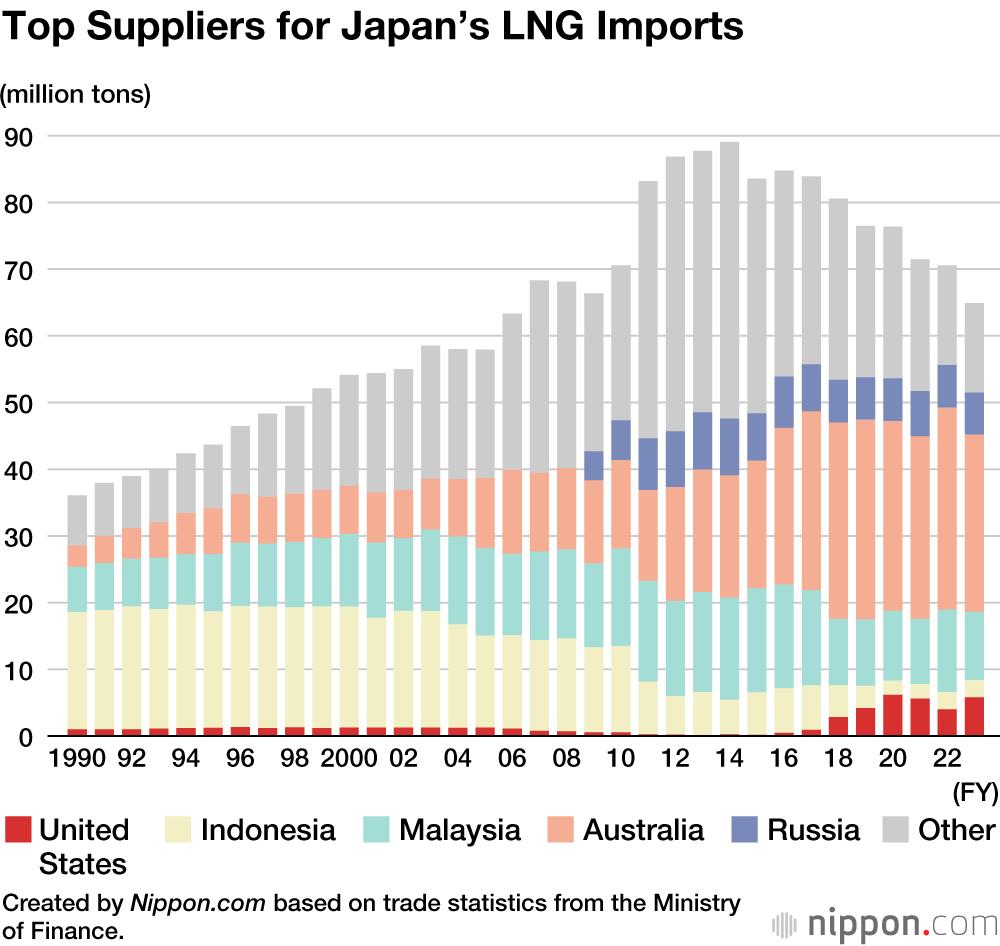
Japan’s LNG Suppliers: Trump Targets Greater US Share
Economy Politics Culture- English
- 日本語
- 简体字
- 繁體字
- Français
- Español
- العربية
- Русский
Meeting with US President Donald Trump in Washington D.C. on February 7, Japanese Prime Minister Ishiba Shigeru agreed to expand Japanese imports of US liquefied natural gas. The decision reflects US aims to reduce its trade deficit with Japan and the Japanese desire to secure a stable supply of energy.
Japan began importing LNG in 1969, starting with a shipment from Alaska to a Tokyo Gas terminal in Yokohama. The following year, also in Yokohama, Tokyo Electric Power Company started operating the world’s first thermal power plant using only LNG. Japan diversified its supply, importing LNG from Southeast Asia and the Middle East as consumption grew, with natural gas rising to account for 24.5% of its primary energy in fiscal 2014.
In the 1990s, Indonesia was Japan’s largest LNG supplier. However, exports to Japan have dropped as the country’s growing economy has boosted domestic demand. In recent years, Malaysia and Australia have taken over as the main LNG suppliers to Japan.
The development of techniques for extracting shale gas from underground sedimentary rock formations starting in the 2000s spurred commercial production around the globe, with North America leading the way. The United States has become a leading gas exporter, and in 2018 Tokyo Gas entered a long-term contract to import US shale gas.
Japan imported 64.9 million tons of LNG in fiscal 2023. The top three suppliers were Australia with 26.6 million tons (41%), Malaysia with 10.2 million tons (15.8%), and Russia with 6.3 million tons (9.7%). While the United States supplied only 5.8 million tons (9%), the amount is expected to rise significantly in the coming years.
(Translated from Japanese. Banner photo: An LNG carrier. © Pixta.)

